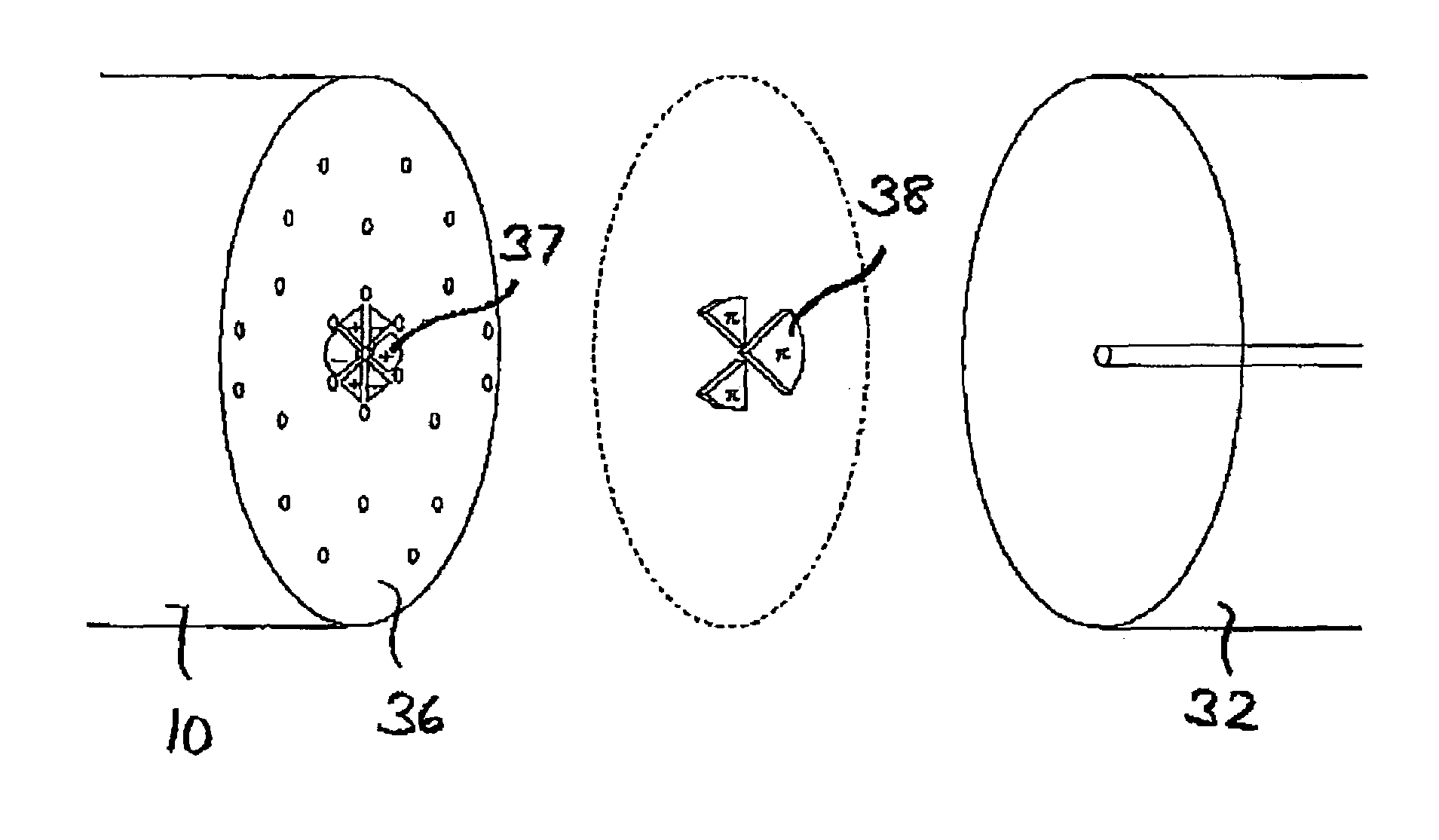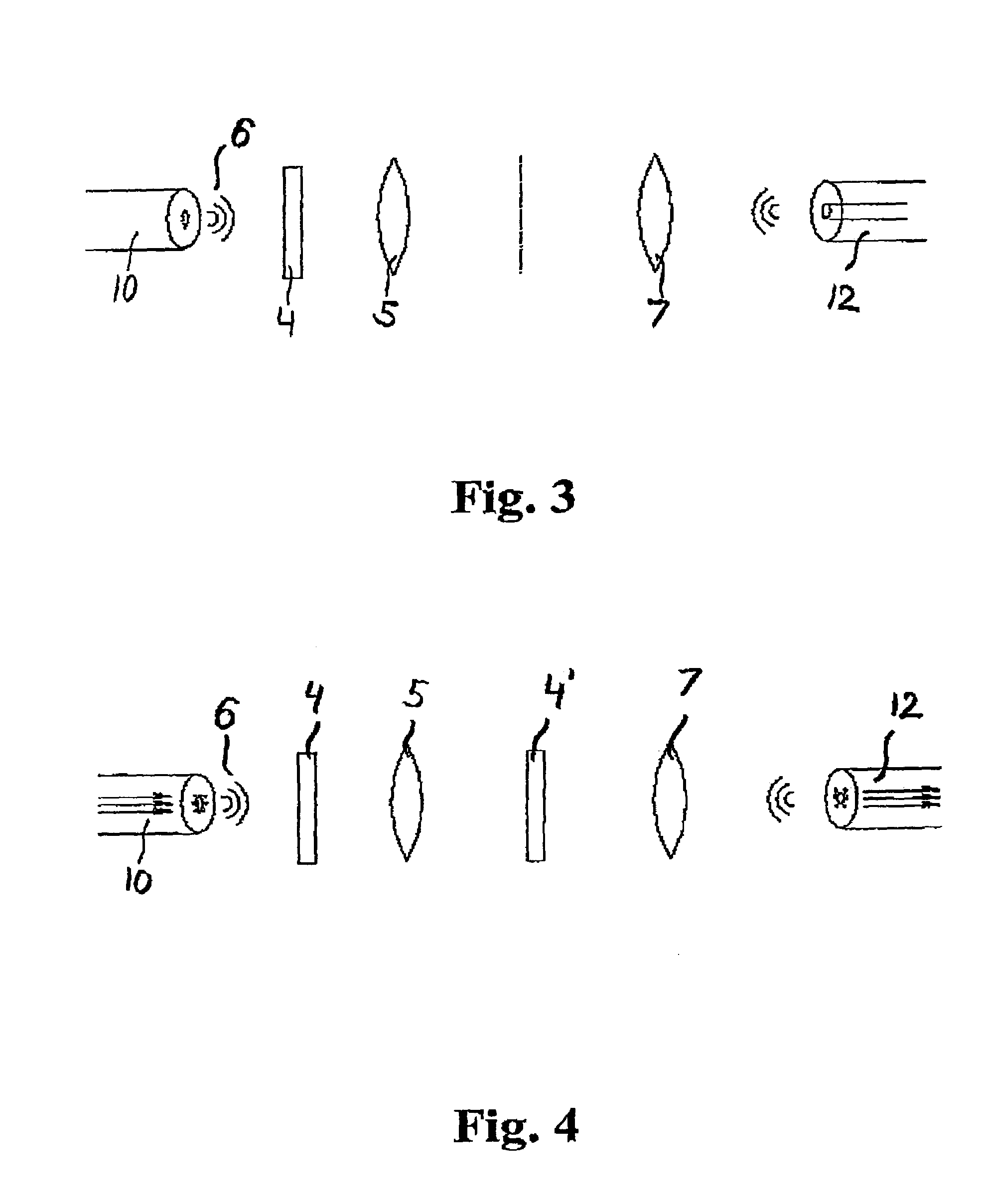System for electromagnetic field conversion
a technology of electromagnetic field and electromagnetic field, applied in the field of electromagnetic field conversion, can solve the problem of absence of sphere and produce defect, and achieve the effect of high mode suppression ratio
- Summary
- Abstract
- Description
- Claims
- Application Information
AI Technical Summary
Benefits of technology
Problems solved by technology
Method used
Image
Examples
Embodiment Construction
[0062]FIG. 1 illustrates the general principle of the present invention wherein the first electromagnetic field is generated by superposition of electromagnetic fields emitted from a first set of waveguides 1, 2, . . . , m. The system 1 comprising the complex spatial electromagnetic field converter converts the first electromagnetic field into the desired second electromagnetic field that is the superposition of desired propagating modes of a second set of waveguides 1, 2, . . . , n. The system operates to perform both mode conversion and switching.
[0063]FIG. 2 shows a 4f optical system 1 for conversion of a first electromagnetic field 6, namely a light beam emitted by a laser 2 and collimated by the collimator 3, into a desired second electromagnetic field 8 for propagation through the microstructured waveguide 10. A complex spatial electromagnetic field converter 4, such as a spatial light modulator (SLM), is positioned for reception of the first electromagnetic field 6 that is tr...
PUM
| Property | Measurement | Unit |
|---|---|---|
| mode size | aaaaa | aaaaa |
| mode size | aaaaa | aaaaa |
| electromagnetic fields | aaaaa | aaaaa |
Abstract
Description
Claims
Application Information
 Login to View More
Login to View More - R&D
- Intellectual Property
- Life Sciences
- Materials
- Tech Scout
- Unparalleled Data Quality
- Higher Quality Content
- 60% Fewer Hallucinations
Browse by: Latest US Patents, China's latest patents, Technical Efficacy Thesaurus, Application Domain, Technology Topic, Popular Technical Reports.
© 2025 PatSnap. All rights reserved.Legal|Privacy policy|Modern Slavery Act Transparency Statement|Sitemap|About US| Contact US: help@patsnap.com



